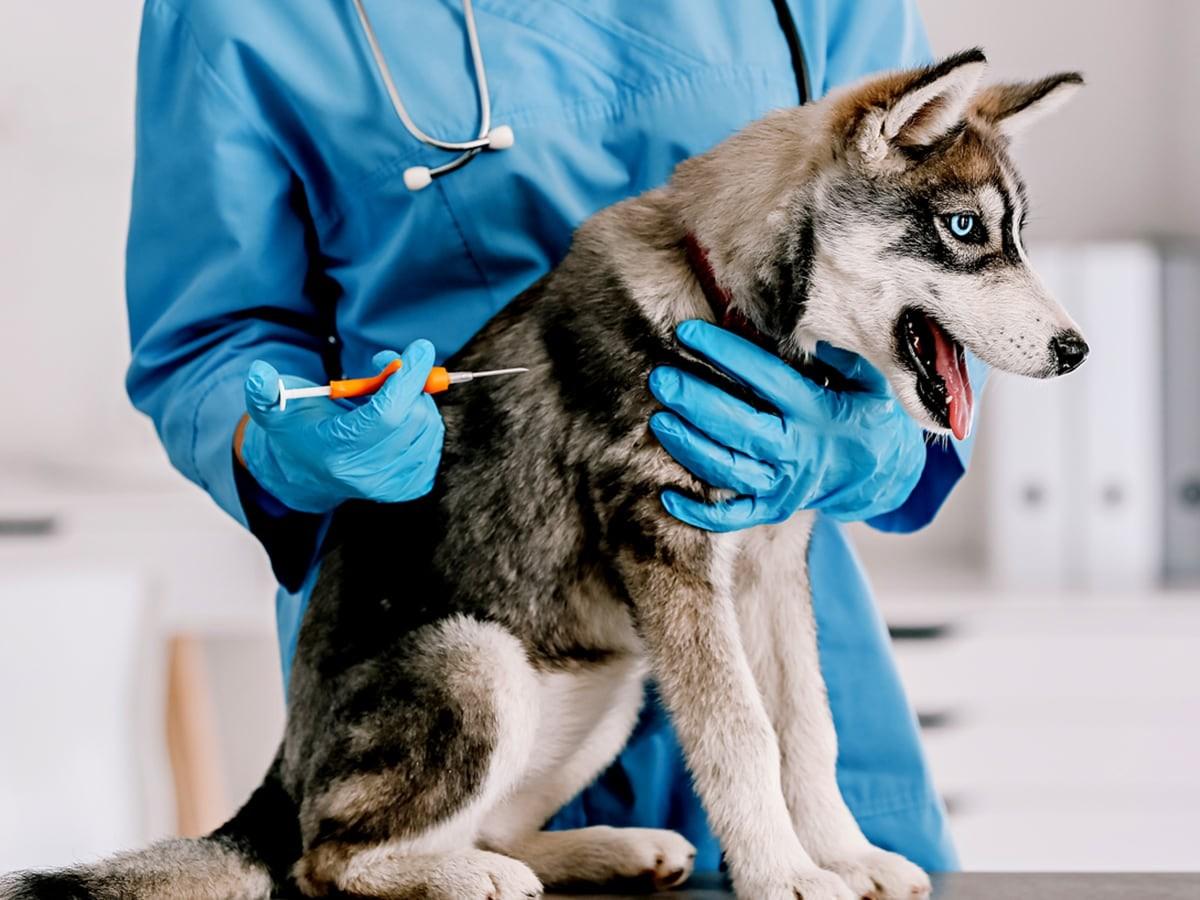Why and How to Get Your Pet Microchipped
When you buy or adopt a new pet, your vet may promptly ask, “Would you like to microchip your newest best friend?”
The answer we hope you’ll respond with is: “Yes!”
There are many benefits to microchipping your pet. Here’s why you should microchip your pet and how the process works.
How Microchipping Works
What is a microchip, and how does it work for pets? Microchips are tiny electronic devices the size of a grain of rice. They are professionally injected under your pet’s skin (typically between their shoulder blades) where they can be read by a universal scanner.
The chip works by transmitting a radio frequency to the scanner which pulls up a microchip database with the parent’s contact information. As long as you register your pet and keep your information current, the database signals the chip company to contact the pet parent.
Of course, many pet parents are old school and prefer their pets wearing a collar and id tags, but what happens if the collar falls off? Microchipping a pet is a great method to help prevent losing your furry friend for good.
Benefits of Microchipping Your Pet
As a pet parent, there are several benefits to microchipping a pet. Here are 3 reasons why you should microchip your furry friend:
Reason 1: Your pet could run away.
Sometimes, all it takes is a little imagination. Imagine how you’d feel if your pet got lost or ran away. Microchips can reunite lost and runaway pets with their families. With microchips, you have the benefit of being contacted in the event someone finds your lost pet and has their chip scanned.
Reason 2: Your pet could become lost or stolen.
This reason might not involve a sinister kidnapper as you might initially imagine. For example, what if a natural disaster occurs in your area and you get separated from your pet?
In situations that involve floods, hurricanes, or tornadoes, you might not be able to readily find your pet and must evacuate. A great benefit of microchipping your pet is that it offers permanent identification if someone else finds your best friend.
Reason 3: Your pet might need recurring medication.
Do you have a medically fragile pet on your hands? As a pet parent, you want to make sure your pet gets medication right away when he or she needs it. Microchipping offers a way to help ensure your pet gets his or her medication in the event they become lost. Learn more about the importance of knowing your pet’s medical history.
For example, let’s say your older diabetic dog gets away from you on a walk. Someone else finds her and takes her to a local vet clinic. The vet clinic scans your dog’s microchip and contacts you.
You come to the vet’s office, insulin syringe at the ready. (Or the vet gives your pet a shot of insulin while you’re en route to collect her.) By microchipping your pet, you can help avoid a life-or-death situation with a tiny chip the size of a grain of rice.
How to Microchip Your Pet
In most cases, microchipping offers a completely harmless solution to keeping track of your pet. Here’s what you need to know about the process, and how to get it done.
Talk to a vet about microchipping and schedule an appointment
Have your vet perform the procedure
Submit microchip registration, ensuring your information stays up to date
Step 1: Talk to your veterinarian, of course!
Most veterinary clinics keep microchips handy, so chances are, if you’re in for a regular appointment, you can have your pet implanted with a microchip that same day.
Let your veterinarian know that you want to microchip your pet prior to your next appointment – or prior to your first appointment with your new kitten or puppy. You might also check with the local animal shelter to find out if they host microchipping events as well.
Step 2: Have your veterinarian implant the chip.
Your veterinarian will use a simple injection to implant the microchip. It takes just seconds to implant the chip – the same amount of time it takes to give any other injection.
It might look easy, but you never want to do it yourself. If you use too much force or put the needle in the wrong location, the microchip might not read correctly in the future. It may also cause health problems if implanted in the wrong place.
Veterinarians know exactly where the microchips should go and can recognize problems and treat your pet accordingly.
Step 3: Submit microchip registration.
Register the microchip and keep it current. If you don’t, the microchip won’t work at all. Many pets get microchipped but far fewer get registered correctly.
You must fill out the paperwork and make sure you register your phone number with the microchip company. If you move or you change your phone numbers, you must update that information.
Contrary to popular belief, microchips do not serve as a tracker or a GPS device. It only works if someone scans the microchip. Next, the person who finds your cat (or dog) can contact that company that made the chip and find you.
Why You Should Consider Microchipping Your Pet
As a pet parent, there are many benefits to microchipping your pet. If nothing other than to help prevent yourself from experiencing the heartache of a lost or stolen pet, microchip your fur friend. It takes just seconds; your veterinarian can do it safely and you can have added peace of mind.

With 15 years as a dog and cat parent, my pet articles are a mix of humor and firsthand experience - proof that the best stories often come with paws and purrs.











